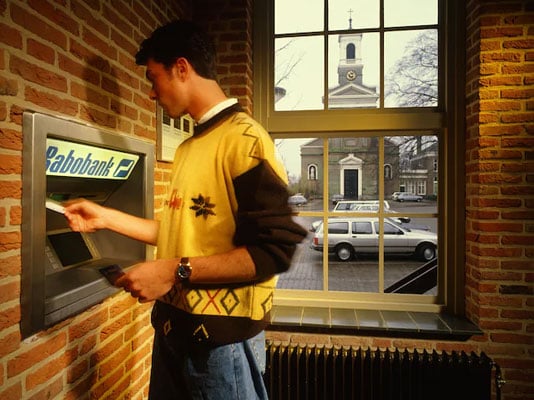
History
Rabobank got its start as group of small credit unions founded by farmers. Their entrepreneurial spirit and cooperative mentality have guided us throughout our 125-year history.

How it all started
At the end of the 19th century, Dutch farmers and horticulturists wanted to modernize but had difficulty getting credit. So they decided to establish credit cooperatives. These cooperative banks became a great success. The farmers could borrow money for a reasonable interest rate, and their production and yields increased thanks to these investments. It was all possible due to the savings of farmers who were well off. Other citizens also benefited. Many people brought their savings to the farmers’ lending banks and received a good interest rate. The cooperatives worked locally and needed a central bank to support them in various areas. That is why they founded two overarching organizations in 1898: the Coöperatieve Centrale Raiffeisen-Bank in Utrecht and the Coöperatieve Centrale Boerenleenbank in Eindhoven. In 1900, some 67 cooperative farmers’ lending banks were members of one of the two central organizations.

From a farmers’ lending bank to a bank for everyone
Starting in the 1950s, the farmers’ lending banks also started welcoming non-agricultural entrepreneurs and private individuals. By that time, there were over 1,300 local Rabobanks. They evolved into general financial services providers, no longer only for savings and agricultural credit. Clients could turn to the banks for loans, home mortgages, business financing, payment services and insurance. In the meantime, automation enabled new forms of payment, such as bank transfers, bank giro credits and checks. The client base was rapidly expanding. The local Rabobanks opened more and more branches in large cities and new residential areas. Everyone had a Rabobank branch somewhere close by. This is the name that has been etched on building facades since 1972, following the merger of the two central banks into Rabobank Nederland.

A worldwide “financial warehouse”
The Dutch business community continued to grow rapidly in the 1970s and 1980s – and so did Rabobank’s service provision to companies. The bank became the principal banker of many large organizations. There were subsidiaries and affiliated companies for specific services, such as Interpolis (for insurance), De Lage Landen (for leasing) and Robeco (for asset management). Gradually, the Rabobank Group turned into a “financial warehouse” with a complete service portfolio. Starting in the early 1980s, Rabobank expanded across the border. It opened branches in Frankfurt and New York and acquired retail banks in rural areas worldwide, including in Australia, the USA (California), Brazil and Chile. In 2006, Rabobank had branches in 42 countries. This is how the organization evolved from a purely Dutch bank into an international financial services provider, with a focus on the food and agriculture sector.

The digital age
Technological developments changed the way clients pay and do their banking. The debit card and ATM were the first to appear, followed later by the payment terminal and making purchases with debit cards in stores. Internet banking was introduced at the end of the 1990s. Rabobank was one of the first banks that made products and services available through online channels. The number of Rabobank branches started to decline in the year 2000, as clients could organize more and more of their banking matters online. Nowadays, clients have fast access to financial services, day and night, thanks to the Rabo Banking App.

One Rabobank, one cooperative
In 2021, Rabobank operated in 37 countries, with about 8.9 million clients in the Netherlands, of which 2 million are members. They could provide input on policy through the Member Councils, befitting a cooperative bank that has strong ties with local communities.
From the very beginning to today, Rabobank has remained a socially committed bank. Local Rabobanks contribute to strong, livable communities in municipalities and regions, and worldwide Rabobank helps rural clients continue to innovate and become more sustainable. This is how we are turning our mission into reality: Growing a better world together.
